Medical Disclaimer: This article is for informational purposes only and does not replace professional veterinary advice. Always consult your veterinarian for diagnosis and treatment of dog eye problems.
Table of Contents
Introduction
Dog Eye Health: Signs, Causes & How to Treat Them Fast
Medical Disclaimer: This content is for informational purposes only and does not replace professional veterinary advice. Always consult your veterinarian about any concerns with your pet’s eyes.
As a small-animal veterinarian practicing in Ottawa for over eight years, I’ve seen firsthand how quickly eye issues in dogs can go from minor to serious. One spring morning, a client rushed into the clinic with Bailey, her 9-year-old Shih Tzu, who had woken up with a red, cloudy eye and signs of pain. The diagnosis? Acute glaucoma—a condition that can cause permanent blindness in less than 48 hours. Thankfully, we caught it in time.
Most canine eye concerns don’t begin with something dramatic. It might start with a bit of squinting, unusual discharge, or your dog acting hesitant on a walk. But when left untreated, even mild symptoms like redness or tearing can develop into infections, ulcers, or vision loss.
This guide is designed to help you recognize early signs of trouble, understand the most common causes, and know when it’s time to contact your veterinarian. Whether your dog is prone to allergies, has bulging eyes, or just seems to blink more than usual, you’ll find helpful information here to protect their vision and comfort.
Key Takeaways
- Dog eye problems can range from minor irritations to emergencies like glaucoma or injury.
- Common signs include redness, discharge, squinting, excessive tearing, or visible third eyelids.
- Certain breeds like Pugs and Cocker Spaniels are more prone to eye issues due to anatomy or genetics.
- Early diagnosis and treatment can prevent long-term damage or blindness.
- Home care includes daily observation, gentle cleaning, and regular grooming.
- Emergencies such as bulging eyes or sudden blindness need immediate vet attention.
- This guide includes a 5-minute home checklist, Canadian treatment costs, and vet-approved tips for prevention.
How to Recognize Dog Eye Problems
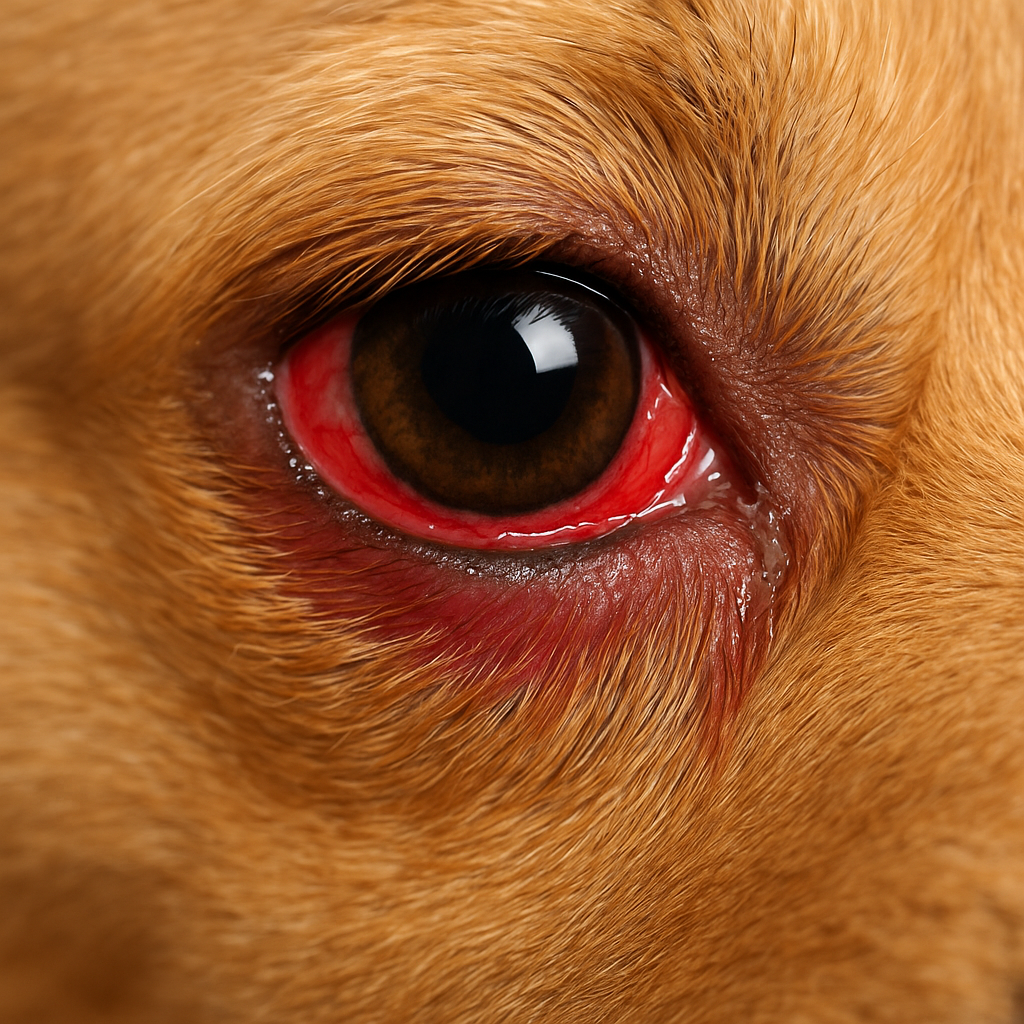
Also visit: https://doglifeexpert.com/ultimate-dog-dental-care-guide-7-proven-tips/
Catching eye problems early can mean the difference between quick relief and permanent vision loss. As a vet, I’ve seen too many dogs come in only after severe symptoms appear—when earlier intervention could have saved their sight. Since dogs can’t tell us when their eyes hurt, pet parents need to act as their eyes and ears.
Early Signs of Dog Eye Problems
Watch for these visible signs, especially in breeds with known eye risks:
- Red or bloodshot eyes
- Clear, yellow, or green discharge
- Squinting, frequent blinking, or keeping one eye shut
- Cloudiness or change in eye color
- Rubbing or pawing at the eye
- Visible third eyelid (“haw”) or cherry-red lump
- Bulging or sunken appearance
These symptoms may point to conditions like conjunctivitis, glaucoma, dry eye, or corneal ulcers—all common dog eye problems that require quick attention.
Behavior Changes That Signal Eye Trouble
Not all dog eye problems show up visibly. Sometimes your dog’s actions offer the first clue:
- Hesitating on stairs or in dim lighting
- Bumping into furniture or doorframes
- Reluctance to play or go outside
- Increased clinginess or anxiety
- Sudden vocalizing (whining, yelping) without clear cause
These signs may suggest pain, discomfort, or worsening vision—and should prompt a call to your vet.
5-Minute Home Eye Health Checklist
Use this at-home check weekly, especially if your dog is a breed prone to eye problems of dogs (like Bulldogs, Shih Tzus, or Cocker Spaniels):
| What to Check | What’s Normal | Concerning Signs |
|---|---|---|
| Eye color | Clear and consistent | Redness, yellowing, cloudiness |
| Eyelid position | Even and flat against eye | Rolled in/out lids, swelling |
| Discharge | Minimal, clear tearing | Thick, green, or crusted mucus |
| Third eyelid | Barely visible or hidden | Protruding pink or red tissue |
| Eye surface (cornea) | Smooth, shiny, moist | Dull, scratched, blue-gray clouding |
| Reaction to light | Normal blinking/reflex | Delayed or absent response |
If you notice even one abnormal finding, it’s best to book an exam. Many eye problems worsen fast—and early treatment often leads to the best outcomes.
5-Minute Home Eye Health Checklist
Use this quick home check once a week—especially for breeds like Bulldogs or Shih Tzus:
| What to Check | What’s Normal | What’s Not |
|---|---|---|
| Eye color | Clear and bright | Red, cloudy, yellow |
| Discharge | Minimal, clear tears | Thick, green/yellow mucus |
| Eyelid shape | Smooth, even lids | Rolled in/out, swelling |
| Third eyelid visible? | Usually hidden | Poking out or inflamed |
| Reaction to light | Blinks normally | Delayed or no reaction |
Most Common Dog Eye Problems
There are over a dozen types of eye problems, but many share overlapping symptoms. Knowing the common ones helps you act fast and avoid complications.
Minor vs Serious Dog Eye Problems
Here’s a quick-reference table of the most common eye problems, symptoms, and causes:
| Condition | Symptoms | Potential Causes |
|---|---|---|
| Conjunctivitis (Pink Eye) | Redness, discharge, squinting | Allergies, bacteria, viruses |
| Dry Eye (KCS) | Thick mucus, red eyes, squinting | Autoimmune, reduced tear production |
| Cataracts | Cloudy eyes, vision loss | Aging, diabetes, genetics |
| Glaucoma | Pain, bulging, cloudy cornea | High eye pressure |
| Corneal Ulcer | Squinting, tearing, pawing at eye | Trauma, infection |
| Cherry Eye | Red lump in inner corner | Gland prolapse (genetic) |
| Entropion / Ectropion | Eyelids rolled in or out, irritation | Genetic eyelid malformations |
| Eyelid Tumors | Lumps on eyelid, irritation | Benign or malignant growths |
| Progressive Retinal Atrophy | Night blindness, bumping into objects | Inherited (especially in Setters, Poodles) |
| Uveitis | Pain, squinting, red eyes | Infections, trauma, autoimmune |
| Allergies | Redness, watery discharge, rubbing | Environmental allergens, food |
| Proptosis | Eye bulging from socket | Trauma, brachycephalic anatomy |
| SARDS / Retinal Issues | Sudden blindness, pupil changes | Neurological or autoimmune |
These eye problems range from manageable at home to emergency-level, and quick recognition is key.
Breeds Prone to Dog Eye Problems
Some breeds are genetically more likely to develop eye conditions:
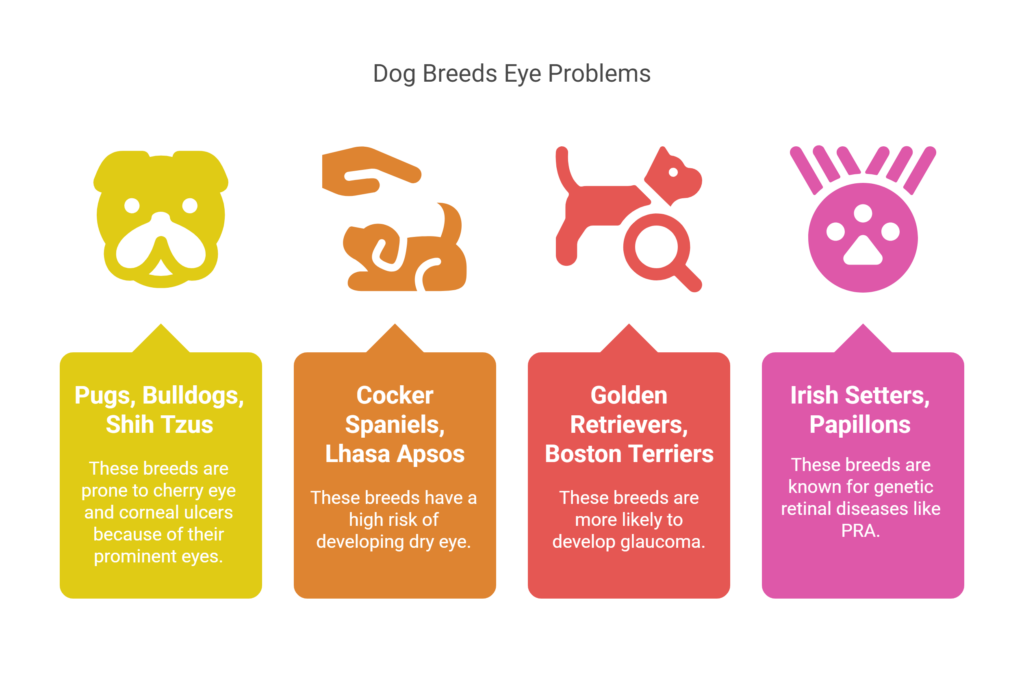
If your dog is one of these breeds, regular eye exams are a must.
Causes and Risk Factors for Dog Eye Problems
Eye problems of dogs can be triggered by everything from pollen to trauma. Understanding the root causes helps prevent recurrence and supports better treatment decisions.
Environmental and Seasonal Causes
Some eye issues are seasonal or environmental in nature:
- Pollen, dust, mold: Common allergens that lead to itchy, red eyes
- Wind or debris: Can cause corneal scratches or irritation
- Dry indoor air or smoke: May lead to dry eye or inflammation
- Poor grooming: Overgrown facial hair can scratch or block tear ducts
Keeping your dog’s environment clean and grooming up to date helps avoid these preventable dog eye problems.
Genetic and Age-Linked Dog Eye Problems
Many eye problems are inherited or develop with age:
- Cataracts: Common in older dogs, and in breeds like Miniature Schnauzers and Poodles
- Progressive Retinal Atrophy (PRA): Genetic in breeds like Papillons, Collies
- Entropion or ectropion: Eyelid shape is inherited and affects breeds like Basset Hounds, Shar Peis
- Dry eye (KCS): Often seen in older dogs or specific breeds like Cocker Spaniels
Spaying or neutering doesn’t affect these conditions, but early detection and routine eye checks can make a big difference.
Health Conditions That Trigger Dog Eye Problems
Systemic health issues often lead to eye conditions:
- Diabetes: 75% of diabetic dogs develop cataracts within a year
- High blood pressure: Can cause retinal detachment or hemorrhage
- Autoimmune diseases: May trigger dry eye or uveitis
- Neurological disorders: Linked to sudden blindness (e.g., SARDS)
If your dog has a chronic illness, routine eye monitoring becomes essential.
How Vets Diagnose Dog Eye Problems
Veterinarians use a combination of physical exams and specialized tools to diagnose eye problems accurately. Getting the right diagnosis is critical—especially when symptoms are sudden, painful, or threaten vision. As a practicing vet, I’ve handled everything from minor eye irritation to full-blown glaucoma cases requiring emergency surgery.
Step-by-Step Diagnosis of Dog Eye Problems
Here’s how most vets approach a dog with eye concerns:
- History & Behavior Review
We’ll ask about recent symptoms, exposure to irritants (like dust or smoke), underlying conditions like diabetes, and breed-related risks for dog eye problems. - Full Eye Examination
Using a bright light, we check for redness, asymmetry, swelling, visible third eyelids, and any signs of discomfort. Eye symmetry, movement, and blinking are all assessed. - Fluorescein Stain Test
A drop of orange dye helps highlight scratches, ulcers, or damage to the cornea. It’s essential for diagnosing trauma-related dog eye problems. - Schirmer Tear Test
A small paper strip is tucked under the lower lid for 60 seconds to measure tear production—critical for detecting dry eye (keratoconjunctivitis sicca). - Tonometry
This test measures intraocular pressure to detect glaucoma or uveitis. Vets use handheld devices like the TonoVet to gently check both eyes. - Ophthalmoscopy
We use a lens and light source to view the back of the eye, including the retina and optic nerve. This is key for diagnosing progressive retinal atrophy (PRA) and other internal eye problems. - Bacterial Culture or Cytology
For chronic infections, we may swab the eye to identify bacteria, fungi, or abnormal cells under a microscope. - Bloodwork or Imaging
In severe or recurring cases, systemic disease might be involved. X-rays, ultrasounds, or blood tests can help find deeper causes of complex eye problems.
If your dog is referred to a veterinary ophthalmologist, they may also perform advanced diagnostics like electroretinography or ocular ultrasounds.
When Dog Eye Problems Are an Emergency
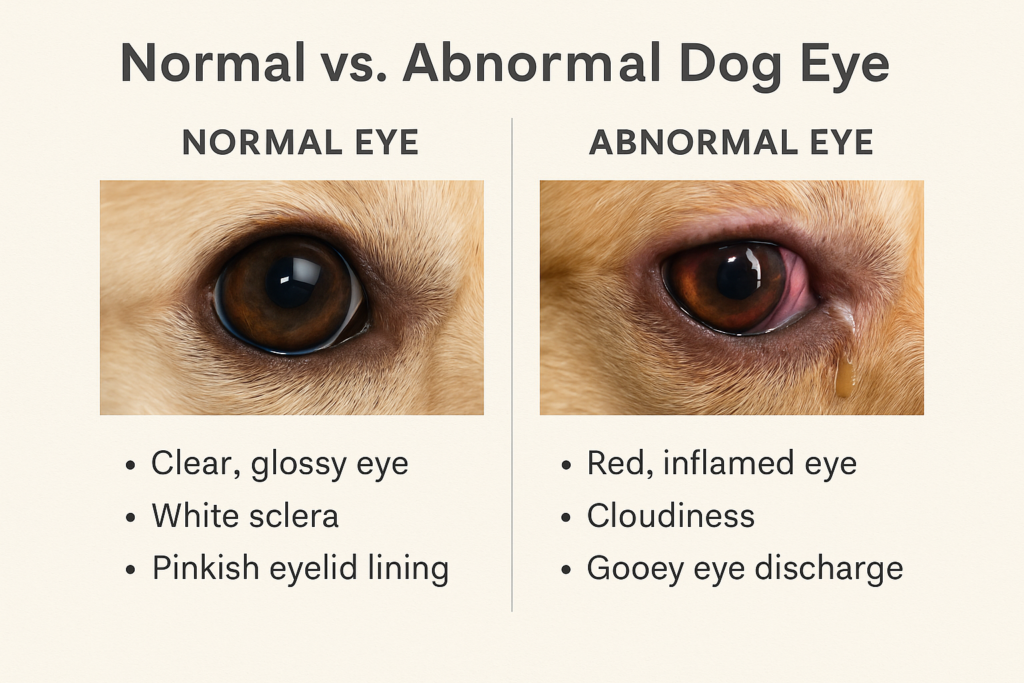
Some dogs eye problem require immediate veterinary attention. Call your vet or emergency clinic if your dog shows:
- Sudden blindness or disorientation
- A bulging or out-of-socket eye
- Severe pain, constant squinting, or howling
- Rapidly worsening redness or swelling
- Thick, yellow-green discharge with fever or lethargy
These signs may indicate glaucoma, trauma, proptosis, or a severe infection—conditions that can lead to permanent damage within hours.
Treatment Options for Dog Eye Problems
Once your vet identifies the cause, treatment for eye problems can range from simple eye drops to corrective surgery. Prompt care often prevents long-term complications and relieves your dog’s discomfort quickly.
Medication for Dog Eye Problems
Many mild to moderate eye problems respond well to medication:
- Antibiotic eye drops or ointments: For bacterial conjunctivitis, corneal ulcers
- Anti-inflammatory meds (NSAIDs or steroids): For uveitis, allergic conjunctivitis
- Tear stimulants (e.g., cyclosporine): For chronic dry eye (KCS)
- Pain relief drops: For glaucoma, ulcers
- Artificial tears or lubricants: Daily support for dry or irritated eyes
Always follow your vet’s instructions—misusing drops (like human eye drops) can make dog eye problems worse.
Surgery for Severe Dog Eye Problems
Some cases require surgical correction:
- Cherry eye repair: Repositioning or removing the prolapsed tear gland
- Entropion/Ectropion correction: Eyelid reshaping surgery
- Cataract surgery: Lens removal and possible implant in qualified cases
- Tumor removal: Biopsy and excision if eyelid masses are detected
- Enucleation: Eye removal for severe trauma, cancer, or uncontrollable pain
Your vet may refer you to a veterinary ophthalmologist for complex eye problems.
Typical Canadian Cost for Treating Dog Eye Problems
Here’s a general breakdown of what you might expect to pay across Canada:
| Condition | Average Cost (CAD) |
|---|---|
| Conjunctivitis (meds only) | $100 – $250 |
| Corneal Ulcer | $250 – $600 |
| Cherry Eye Surgery | $800 – $1,200 |
| Cataract Surgery | $2,500 – $4,000 per eye |
| Glaucoma Management | $300 – $700 initial + meds |
| Enucleation (eye removal) | $1,000 – $1,800 |
Prices vary by province and clinic. Pet insurance may cover most medical dog eye problems, but check your policy.
https://vcacanada.com/know-your-pet/eye-discharge-in-dogs
How to Prevent Dog Eye Problems
While not all eye problems are avoidable, many can be minimized with simple, consistent care. Prevention is especially important for at-risk breeds or dogs with chronic health conditions.
Daily Tips to Avoid Dog Eye Problems
These small habits can make a big impact:
- Wipe away discharge daily with a soft, damp cloth
- Trim hair around the eyes, especially for long-haired breeds like Shih Tzus
- Avoid harsh shampoos or sprays near your dog’s face
- Protect eyes from wind, sand, or debris—especially during outdoor activities
- Keep bedding and living areas clean to reduce allergens and irritants
These steps are part of daily maintenance that helps prevent infections and irritation.
Grooming and Diet Tips
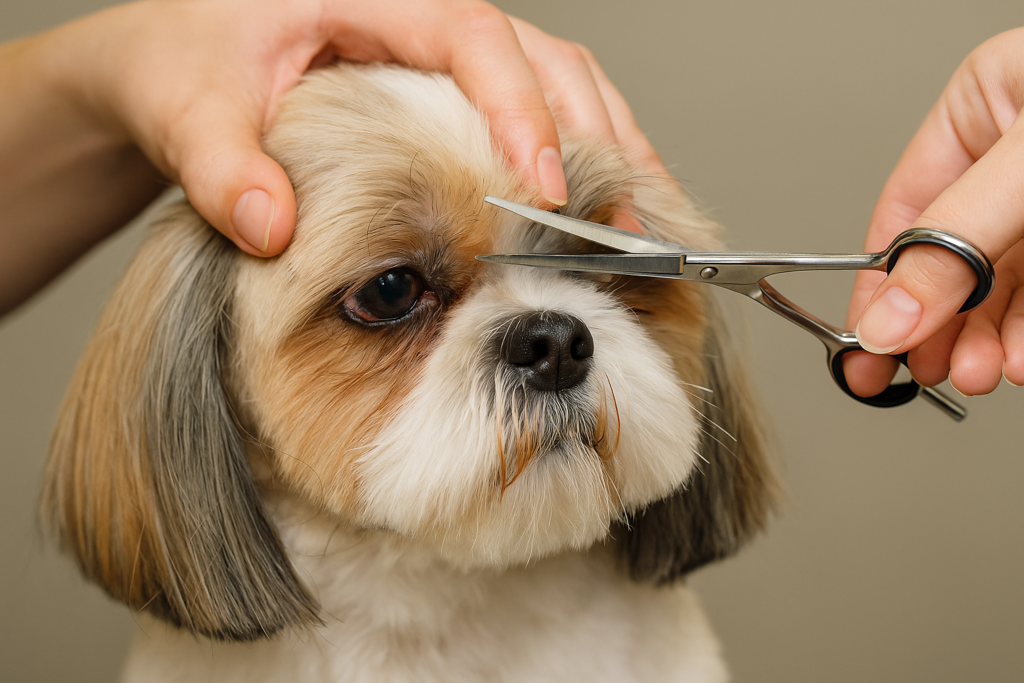
Healthy grooming and nutrition support eye health:
- Use blunt-tipped scissors or visit a groomer for safe trimming near the eyes
- Add omega-3 fatty acids (like fish oil) to support eye and immune health
- Ensure hydration, as dehydration can lead to dry eyes
- Provide a balanced, high-quality diet with antioxidants and vitamin A
Ask your vet before introducing any supplements to prevent adverse effects or interactions.
Prevention for Breed-Specific Dog Eye Problems
If your dog’s breed is prone to eye issues, be extra vigilant:
- Pugs and Bulldogs: Schedule eye checks twice a year
- Cocker Spaniels: Monitor tear production regularly
- Golden Retrievers: Get pressure tests for early glaucoma detection
- Setters and Poodles: Ask your vet about early retinal screenings for PRA
By staying ahead of breed-specific risks, you can often reduce or delay serious eye problems of dogs.
Emergency Dog Eye Problems: Act Fast
Some eye problems escalate quickly and can lead to blindness or severe pain if not treated immediately. Knowing what’s an emergency—and how to respond—can save your dog’s vision.
Recognizing a Dog Eye Emergency
Call your vet or head to an emergency clinic if you notice:
- Sudden loss of vision or walking into objects
- Bulging or dislocated eye (proptosis)
- Constant, painful squinting or howling
- Bloodshot eyes with swelling or rapid color change
- Green or thick discharge with fever or lethargy
These signs could mean glaucoma, trauma, or retinal issues—all urgent eye problems.
First Aid for Dog Eye Problems at Home
Until you reach the vet, you can:
- Prevent further trauma: Use a soft cone (E-collar) to stop rubbing
- Gently flush with sterile saline if there’s visible debris (never use tap water)
- Avoid using human eye drops, as many are unsafe for dogs
- Keep lights dim if your dog is sensitive to brightness
Never delay if you suspect an emergency—some eye problems can worsen in hours.
FAQs About Dog Eye Problems
Can allergies cause dog eye problems?
Yes. Environmental allergens like pollen, mold, and dust can trigger red, itchy, watery eyes. Food allergies may also cause secondary irritation. Managing the underlying allergy often reduces flare-ups of eye problems.
Are dog eye problems contagious to humans?
Most are not, but some bacterial or fungal infections can potentially transfer to immunocompromised people. Always wash your hands after handling infected eyes, and avoid sharing linens between pets and people.
How can I tell if my dog has vision loss?
Signs include bumping into furniture, reluctance to go outside at night, or increased anxiety. Vision tests and retinal exams at your vet can help confirm or rule out serious eye problems like PRA or cataracts.
What are the best eye drops for dog eye problems?
Only use vet-prescribed products. Common medications include Optimmune (for dry eye), Tobramycin (antibiotic), or artificial tears like I-Drop Vet Plus. Human drops can be harmful—never self-medicate your dog’s eyes.
Do dog eye problems go away on their own?
Minor irritations might resolve, but most dog eye problems require medical attention. Ignoring signs like discharge, squinting, or redness can lead to complications like ulcers, pain, or permanent vision loss.
Final Thoughts on Managing Dog Eye Problems
Whether your dog has mildly watery eyes or a serious condition like glaucoma or cataracts, early recognition is crucial. In my veterinary practice, I’ve seen how timely intervention can preserve vision—and how quickly untreated eye problems can escalate.
Take a proactive role in your dog’s eye health. Check their eyes weekly, especially if they’re a high-risk breed like a Pug, Cocker Spaniel, or Shih Tzu. Keep facial hair neatly trimmed, avoid smoke and dust, and seek veterinary care as soon as you notice symptoms like redness, squinting, or discharge.
With consistent monitoring and professional guidance, most eye problems can be successfully managed or even prevented. Clear, comfortable eyes mean a happier, more confident dog—and peace of mind for you as a pet parent.

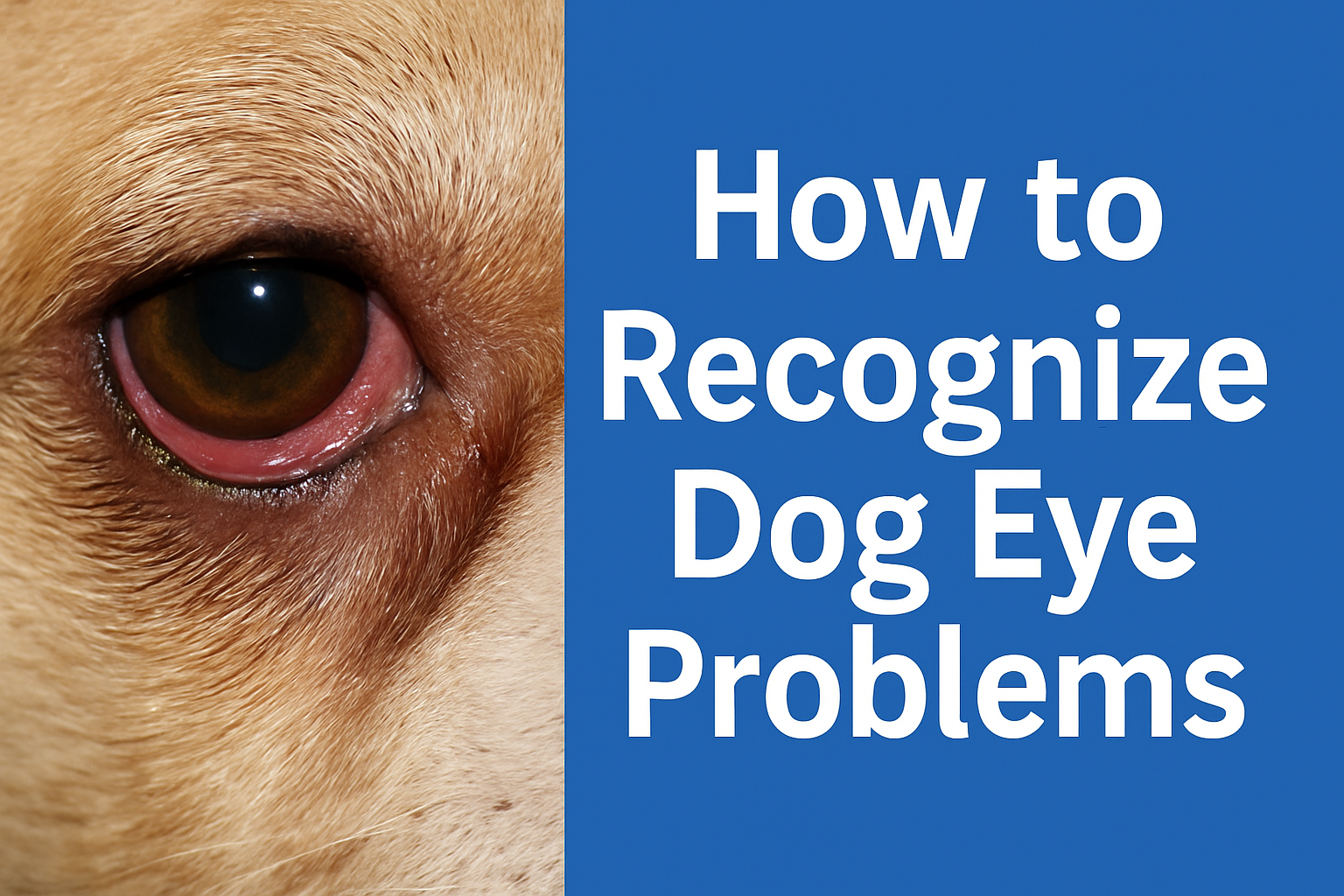
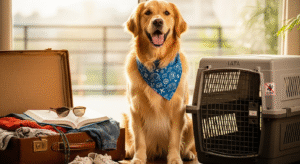
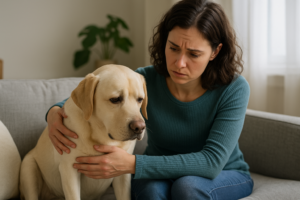
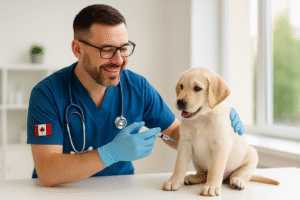
Pingback: Essential Vet’s Guide: 11 Dog Skin Conditions You Can’t Ignore